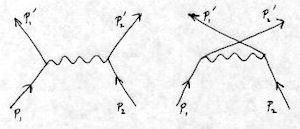c# and liblept¶
vs2008\LeptonicaVS2008Samples.zip contains a sample Visual Studio Solution which shows how simple it is to call liblept functions from c# (or any other .NET language). Unpack it to BuildFolder. You should have:
BuildFolder\
include\
leptonica-1.68\
LeptonicaVS2008Samples\
deskew1bpp\
LeptonicaCLR\
TestLeptonica\
LeptonicaVS2008Samples.sln
lib\
deskew1bpp is a standard C++ Win32 Console program, using precompiled headers, C++ strings, Unicode support, and ATL macros to convert Unicode to null-terminated C strings. In other words, it’s a typical Visual C++ style program. deskew1bpp demonstrates the problems with directly rotating 1bpp images. It shows how first converting a b&w image to gray, block convolving, rotating using area mapping, and then thresholding back to b&w yields better results.
LeptonicaCLR contains the same basic functionality as deskew1bpp but written in C++/CLI. In fact two of the routines, renderCC() and binImageDiff(), are copied verbatim from deskew1bpp.cpp showing how easy it is to port C/C++ to C++/CLI. The resultant DLL is a bridge between the native liblept library and the .NET Common Language Runtime (CLR). It calls native code while at the same time exposing functions to c#. The main difference from a normal DLL is that LeptonicaCLR.cpp is compiled with the /clr switch.
TestLeptonica is a c# program that has a Reference to the LeptonicaCLR DLL to demonstrate calling liblept functions from c#. It does a bit of argument checking and then calls LeptonicaCLR.Utils.DeskewBinaryImage() to actually deskew a b&w image. If you want to be able to step into liblept functions while debugging c#, just right-click the TestLeptonica project and choose Properties. Then make sure Debug | Enable unmanaged code debugging is checked.
You’ll notice that the liblept project is also included in this Solution. As explained above, that’s to allow Visual Studio’s Intellisense to correctly navigate to liblept function definitions.

